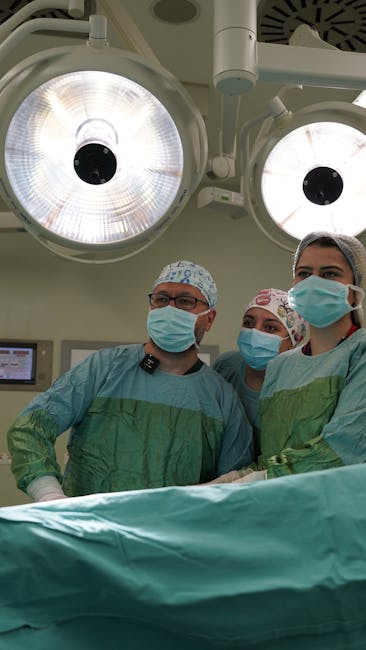 The Advantages of Laparoscopic Surgery in Perryville, Arkansas
The Advantages of Laparoscopic Surgery in Perryville, Arkansas
Laparoscopic surgery, also known as minimally invasive surgery, is a type of surgical procedure that uses a laparoscope, a thin tube with a camera and light on the end, to visualize the abdominal cavity. This allows surgeons to perform complex procedures with minimal scarring, reduced recovery time, and less risk of complications. In Perryville, Arkansas, laparoscopic surgery has become a popular option for patients seeking a less invasive and more effective way to treat various medical conditions.
What is Laparoscopic Surgery?
Laparoscopic surgery is a type of surgical procedure that uses a laparoscope to visualize the abdominal cavity. The laparoscope is inserted through a small incision in the abdomen, and the surgeon uses it to guide the procedure. The laparoscope is equipped with a camera and light, which allows the surgeon to see the internal organs and tissues clearly. The procedure is typically performed under general anesthesia, and the patient is usually able to go home the same day.
Types of Laparoscopic Surgery
There are several types of laparoscopic surgery, including:
1. Cholecystectomy: This is a procedure to remove the gallbladder. The gallbladder is a small organ located under the liver that stores bile, a digestive fluid. The gallbladder can become inflamed or infected, leading to symptoms such as abdominal pain, nausea, and vomiting. Laparoscopic cholecystectomy is a common procedure to remove the gallbladder and relieve symptoms.
2. Hysterectomy: This is a procedure to remove the uterus. The uterus is a muscular organ located in the pelvis that supports the development of a fetus during pregnancy. Laparoscopic hysterectomy is a minimally invasive procedure that can be used to remove the uterus, ovaries, and fallopian tubes.
3. Appendectomy: This is a procedure to remove the appendix. The appendix is a small, tube-like organ located in the lower right side of the abdomen. It can become inflamed or infected, leading to symptoms such as abdominal pain, nausea, and vomiting. Laparoscopic appendectomy is a common procedure to remove the appendix and relieve symptoms.
4. Laparoscopic surgery for hernias: This is a procedure to repair hernias, which are protrusions or bulges in the abdominal wall. Hernias can occur due to a variety of factors, including muscle weakness, obesity, and previous surgery. Laparoscopic surgery for hernias is a minimally invasive procedure that can be used to repair hernias in the abdominal wall, groin, or other areas.
Benefits of Laparoscopic Surgery
Laparoscopic surgery offers several benefits, including:
1. Less scarring: Laparoscopic surgery requires only small incisions, which means less scarring and a faster recovery time.
2. Reduced risk of complications: Laparoscopic surgery is less invasive than traditional open surgery, which means a reduced risk of complications such as infection, bleeding, and adhesions.
3. Shorter hospital stay: Laparoscopic surgery typically requires a shorter hospital stay, which means less time spent in the hospital and a faster recovery time.
4. Less pain: Laparoscopic surgery is less painful than traditional open surgery, which means less discomfort and a faster recovery time.
5. Faster recovery time: Laparoscopic surgery typically requires a faster recovery time, which means you can return to your normal activities sooner.
How to Choose a Laparoscopic Surgeon
Choosing the right laparoscopic surgeon is an important decision. Here are some tips to help you choose the right surgeon:
1. Research: Research the surgeon’s qualifications, experience, and reputation. Look for surgeons who have performed laparoscopic surgery for a variety of conditions and have a good track record of success.
2. Ask questions: Ask the surgeon questions about their experience with laparoscopic surgery, their approach to the procedure, and their expectations for your recovery.
3. Check credentials: Check the surgeon’s credentials, including their medical school, residency, and board certification.
4. Check patient reviews: Check patient reviews and testimonials to get an idea of the surgeon’s bedside manner and patient satisfaction.
Conclusion
Laparoscopic surgery is a minimally invasive procedure that offers several benefits, including less scarring, reduced risk of complications, shorter hospital stay, less pain, and faster recovery time. If you are considering laparoscopic surgery, it is important to choose the right surgeon and research the procedure thoroughly. With the right surgeon and preparation, laparoscopic surgery can be a safe and effective way to treat a variety of medical conditions.
How to Achieve Maximum Success with